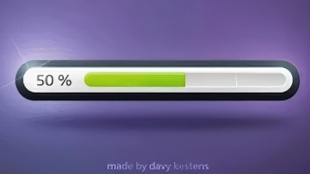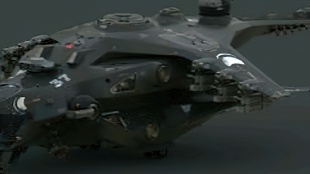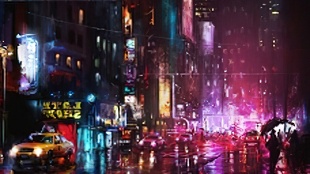您需要 登录 才可以下载或查看,没有账号?注册

x
本帖最后由 雨の日曜日 于 2021-10-2 15:14 编辑
written by:Ari Danesh
Hi, hello. I'm ARI Danish. I'll introduce you to the terrain workflow in Houdini 16.5.
HI,你们好。 我是Ari Danish,将由我给你们介绍Houdini 16.5中的地形工作流程。
First of all, let me introduce myself. I'm the chief lecturer of side effects. Before I came to work at side effects, I was an interactive design professor and had worked for 12 years.
首先,做一下自我介绍,我是 side effects 的首席讲师,在来side effects工作之前,我是一名互动设计教授,已经工作了12年。
Let's start talking about Highfield, which is the name of Houdini terrain file. So, what is Highfield? You can think of Highfields as canvases, but you can paint terrain as a special type of rendered volume. There are two types of voxels in Houdini. Sparse volumes and regularr dense collections in VDB are called Houdini voxels. Therefore, the Highfield is a dense volume with only one height layer and many other layers. I can specify things such as height, mask, debris and water. It is very general and can be used with other data types.
让我们开始谈论heightfield,这是Houdini地形文件的名称。 那么,什么是heightfield? 您可以将heightfields视为画布,但可以将地形绘制为一种特殊类型的渲染体积。 在Houdini里有两种类型的体素。 VDB里的sparse volumes和regualr dense columes,我们称之为Houdini体素。因此,heightfield是一个密集的体积,只有一个高度层,和很多其他层,我可以指定诸如height(高度)、mask(遮罩)、debris(碎石)、water(水)之类的东西。 它非常通用,可以与其他数据类型一起使用。
You can start from the 2D map, or from the 3D geometry created in Houdini or elsewhere, get the lidar data, paste it into the height field, and then project the height of the geometry to the height field according to the gray scale in the height data. You can then use the Highfields data on your 2D map, 3D engine generated geometry, or vdbs data.
您可以从2D图开始,或者从在houdini或者其他地方创建的3D几何体,获得的LiDAR数据,将其粘贴到高度场中,然后根据高度数据中的灰度,将几何图形的高度投影到高度字段。 然后可以将heightfields数据使用到您的2D地图、3D引擎生成几何体或者VDBs数据上。
That's how Houdini works. It is both interactive and procedural. It can carry out program erosion, mask, altitude generator and filter. It also has a painting mask tool, so you can also work interactively. (it's strange to use the word interactive here, and it's also strange to translate interactive transactions. It must be my problem. It can be understood as displaying changes in real time and directly seeing the results.)
这就是Houdini工作的方式。 它既是交互式的又具有程序性。 它可以进行程序侵蚀,遮罩,海拔生成器和过滤器。 它还具有绘画蒙版工具,因此您也可以交互工作。(这里用interactive这个词就很奇怪,翻译成交互式的也很奇怪,一定是我的问题。可以理解成实时显示变化的,可以直接看到结果的。)
How to use the Highfield node. Select the Highfield node and put it into the node panel. The node is just a geometric object. The operations on the toposurface are listed in the detail panel. Expand the data panel of the node and you can see that the two volumes are height volume and mask volume. Therefore, when you create the terrain, the height remains basically the same. By default, the initial terrain is flat, and the masking area will be the entire area of the terrain. Therefore, when there is data affecting the node, the change of Highfield is global. The key thing to note here is that you must enter the size and mesh density.
如何使用heightfield节点。选择heightfield节点放入节点面板中,该节点只是一个几何对象,其中详细面板中罗列了针对地形表面的操作。展开节点的数据面板,可以看到两个volume分别是height volume和mask volume。因此,在创建地形时,高度将基本保持不变。默认情况下,初始地形是平坦的,而遮罩区域将是该地形的整个区域。因此,有数据影响节点时,heightfield的变化是全局的。 此处要注意的关键事项是,必须输入尺寸和网格密度。
When dealing with terrain height, what we really need to do is to extract a lot of information for the game engine. Some of the more useful things are obviously elementalization, but if you want to create MESA (platform), it will provide you with a mesa mask to represent the location of the flat area at the top and the cliff, flow map, eroded debris of the mesa, where the water is in the bedrock, and layers that can also be defined to help you get information about the game engine.
我们在处理地形高度时,真正要做的是为游戏引擎提取大量信息。一些更有用的事情显然是元素化,但如果您要创建Mesa(台地),它会为您提供一个Mesa mask,以表示出顶部平坦区域的位置以及该Mesa的悬崖、流动图、侵蚀的碎屑,水在基岩中的位置都在哪里,以及还可以定义的图层,以帮助获取有关游戏引擎的信息。
Therefore, when you start working, the first thing to do is to plan all areas of the terrain.
因此,当你开始工作,首先要做的是规划出地形的各个区域。
We have many different generators. Paint can draw directly, noise is noise distortion, and some generators contain some pattern patterns. These nodes can project 3D geometry or import content from other content creators, such as Photoshop. For example, the noise generator of h16.4 adds Manhattan and Chebyshev Worley modes.
The following shows how to map terrain through 2D mapping and 3D geometry.
我们有很多不同的生成器,Paint可以直接画,Noise是噪声扭曲,以及一些包含某些Pattern模式的生成器。这些节点可以投影3D几何体,也可以从其他内容创建者(如Photoshop等)导入内容。 比如,H16.4的Noise生成器新增Manhattan和Chebyshev Worley模式。
以下展示通过2D贴图和3D几何映射地形。
The terrain is distorted by Highfield noise. The gray image is obtained by copnet and converted into a relative path through Highfield file.
heigtfield noise 扭曲地形,copnet获取灰度图,通过heightfield file 转成相对路径。
So for the competition game brimstone. What they do is put down a Highfield node and then add some Highfield noise so that we can get the ground texture.
因此,对于竞赛游戏Brimstone。 他们所做的是放下一个heightfield 节点,然后添加一些heightfield noise,以使我们获得地面纹理。
Then, we imported the 2D map of Mount Shasta and projected it on it. You can see that some discontinuities don't look very good.
然后,我们导入了Mount Shasta的2D地图,并将其投影到上面,您可以看到有些不连续性看上去还不太好。
Then a 2D map of the Rockies mountains is added. You can see that they are still not harmonious. We can repair the terrain by blurring it a little, or do some erosion.
然后添加了Rockies 山脉的2D地图,可以看到它们之间还是不太和谐。 我们可以通过稍微模糊来修复这个地形,或者做一些侵蚀。
|

 显示全部 10
显示全部 10












